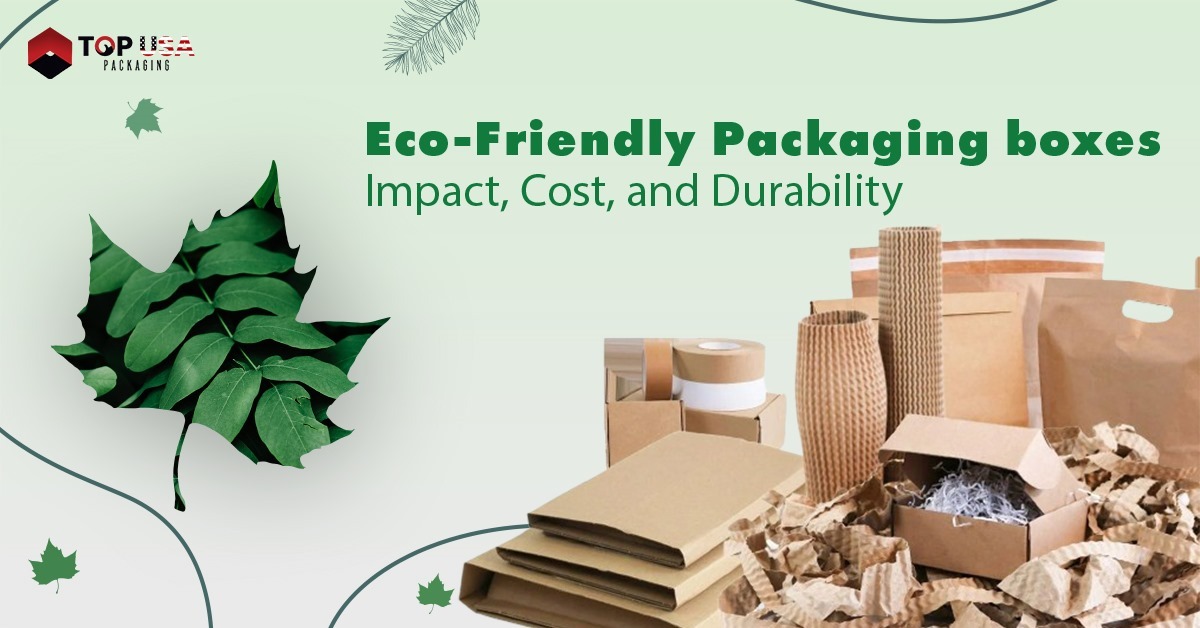Eco-Friendly Packaging Boxes Impact, Cost, and Durability
In today’s environmentally conscious world, consumers are increasingly seeking sustainable solutions, and packaging plays a crucial role in this shift. Eco-friendly packaging boxes are no longer a niche phenomenon; they’re a strategic choice for businesses concerned about their environmental footprint and customer satisfaction. But navigating the world of eco-friendly boxes can be complex. This article delves into the environmental impact, cost considerations, and durability of various materials, empowering you to make informed decisions for your packaging needs.
Environmental Impact: Understanding the Bigger Picture
Traditional packaging often relies on materials like plastic and non-recycled cardboard, contributing significantly to landfill waste and greenhouse gas emissions. Eco-friendly alternatives minimize this impact through responsible sourcing, biodegradability, and recyclability. Let’s explore some popular eco-friendly materials and their environmental merits:
Recycled Cardboard
Made from post-consumer waste paper, recycled cardboard offers a significant reduction in virgin tree usage and associated deforestation. TopUSAPackaging, for instance, sources a large portion of its cardboard from recycled sources, minimizing their environmental footprint.
Mushroom Packaging
This innovative material utilizes mycelium, the root structure of mushrooms, to create sturdy and protective packaging. When disposed of, it readily biodegrades, leaving no harmful residues. Companies like Ecovative are pioneering this revolutionary material.
Bamboo
A fast-growing and renewable resource, bamboo offers a sustainable alternative to wood-based packaging. Its inherent strength and moisture resistance make it suitable for various applications. Brands like Panda Paper utilize bamboo for their eco-friendly boxes.
Bioplastics
Derived from plant-based sources like corn starch or sugarcane, bioplastics offer a biodegradable alternative to traditional plastics. While their production still carries some environmental impact, it’s significantly lower than conventional plastics.
Environmental Impacts of Packaging Materials
Packaging materials, in particular single-use plastics, contribute significantly to the environmental problems mentioned above. Some specific concerns include:
Plastic pollution
Plastic waste ends up in landfills, oceans, and other environments, harming wildlife and ecosystems. Plastic also takes a long time to decompose.
Microplastics
Plastic breaks down into tiny fragments called microplastics, which can contaminate food and water and have unknown health effects.
Energy consumption
Producing plastic packaging requires a lot of energy and fossil fuels, contributing to climate change.
Litter
Discarded packaging, especially plastic, contributes to litter problems and visual pollution.
Environmental Impact of Cardboard
Cardboard is generally considered a more environmentally friendly packaging material compared to plastic. Here’s why:
Renewable resource
Cardboard is made from wood pulp, a renewable resource.
Biodegradable
Cardboard decomposes relatively quickly compared to plastic, reducing landfill waste and microplastic concerns.
Recyclable
Cardboard can be recycled multiple times, reducing the need for virgin materials and energy consumption.
Lighter weight
Cardboard is lighter than many other packaging materials, leading to lower transportation emissions.
Cost Considerations: Striking the Right Balance
While eco-friendly materials often carry a premium compared to their traditional counterparts, the long-term benefits outweigh the initial cost difference. Here’s a breakdown of cost considerations:
MaterialCost
Eco-friendly materials like bamboo or mushroom packaging often have higher initial costs due to their specialized production processes. However, economies of scale and increased adoption are driving down costs.
Production Efficiency
Some eco-friendly materials might require specialized equipment or techniques, impacting production speed and efficiency. However, companies like TopUSAPackaging continuously optimize their processes for cost-effectiveness while maintaining sustainability.
Disposal and Recycling
Eco-friendly materials often have lower disposal costs due to their biodegradability or recyclability. Additionally, some regions offer incentives for using sustainable packaging, further reducing overall costs.
Durability: Ensuring Protection without Compromise
Eco-friendly boxes shouldn’t compromise on product protection. Here’s how different materials fare in terms of durability:
Recycled Cardboard
With advancements in manufacturing technology, recycled cardboard boxes can offer excellent strength and protection, suitable for most lightweight to medium-weight products. TopUSAPackaging offers sturdy recycled cardboard boxes in various sizes and thicknesses to meet diverse needs.
Mushroom Packaging
Despite its organic origin, mushroom packaging exhibits impressive strength and shock absorption capabilities, making it suitable for delicate items. Its natural water resistance adds another layer of protection.
Bamboo
Bamboo packaging boasts exceptional strength and durability, even surpassing traditional wood in some cases. This makes it ideal for heavy-duty applications where protection is paramount.
Bioplastics: The durability of bioplastics varies depending on the specific type and formulation. Some offer comparable durability to traditional plastics, while others might be better suited for less demanding applications.

